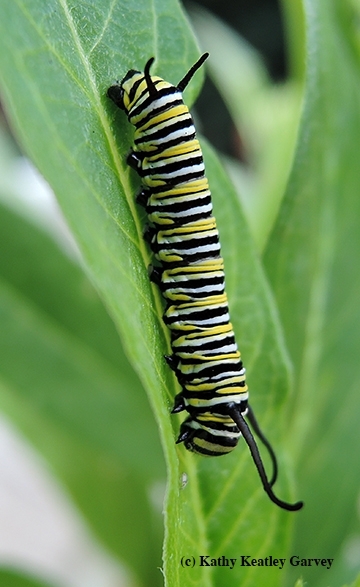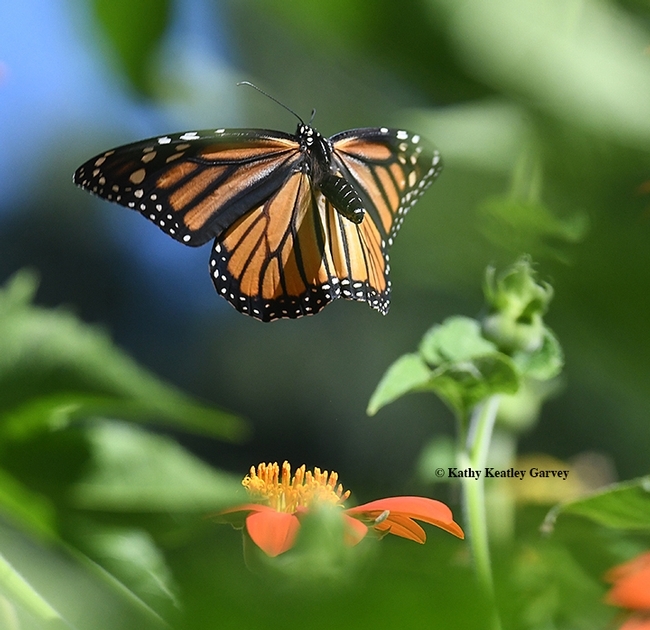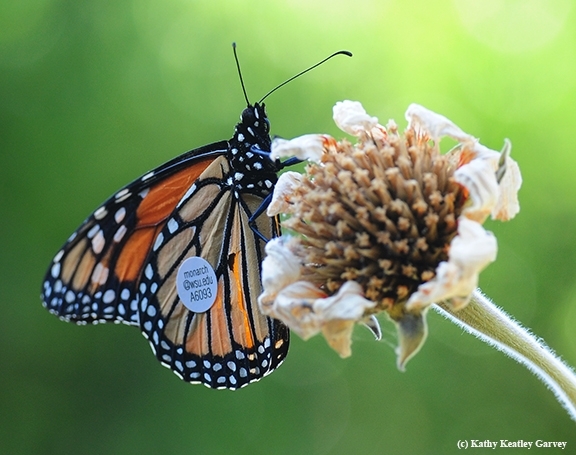
The seventh annual International Monarch Monitoring Blitz will take place Friday, July 28 through Sunday, Aug. 6.
That's when community scientists from across North America--United States, Canada and Mexico--will "come together with the shared goal of helping to protect and conserve the beloved and emblematic monarch butterfly," the organizers said. "Data collected by volunteers each year support trinational efforts to better understand the monarch butterfly's breeding productivity, range, and timing in North America."
So, during this 10-day period, we will look for monarchs, as well as eggs, caterpillars and chrysalids, and load the data via the Trinational Monarch Knowledge Network, "a central repository that, in combining data from various sources, assists researchers in performing large-scale temporal and spatial analyses. The data collected by volunteers help researchers answer key questions about monarch butterfly and milkweed distribution, timing of reproduction, and the use of natural resources. In turn, this information helps conservationists identify and prioritize actions to conserve the species."
Ready to participate? All you have to do is share your data with one of the community science programs below:
- Journey North (journeynorth.org)
- Mission Monarch (mission-monarch.org)
- Monarch Larva Monitoring Project (mlmp.org)
- Naturalista (naturalista.mx)
- Correo Real Program/PROFAUNA A.C. (https://www.correoreal.mx/)
- Western Monarch Milkweed Mapper (monarchmilkweedmapper.org)
The Blitz is organized by the Trinational Monarch Conservation Science Partnership, a collaboration of organizations, including the Commission for Environmental Cooperation, Insectarium/Montréal Space for Life, Environment and Climate Change Canada (ECCC), the Monarch Joint Venture, Journey North, the US Fish and Wildlife Service, the Xerces Society for Invertebrate Conservation, PROFAUNA AC/Correo Real Program, and Mexico's Comisión Nacional de Áreas Naturales Protegidas (Conanp).
Last year's effort resulted in 5988 observations, 2698 participants from 75 states and provinces, 19,222 monarchs observed, and 68,847 milkweeds examined.
Also, you can sign up for the Commission for Environmental Cooperation's newsletter here.
We remember that in 2016, our Vacaville pollinator garden thrived with 300 monarch eggs and caterpillars. The most exciting event? On Monday, Sept. 5, 2016 a citizen-tagged monarch fluttered into our yard from Ashland, Ore. This was part of a migratory monarch project headed by entomologist David James of Washington State University, my alma mater. Community scientist Steven Johnson of Ashland tagged it on Aug. 28, numbering it A6093.
"So, assuming it didn't travel much on the day you saw it, it flew 285 miles in 7 days or about 40.7 miles per day," James told us. "Pretty amazing. So, I doubt he broke his journey for much more than the five hours you watched him--he could be 100 miles further south by now." (See Bug Squad blog)
Now, to keep our eyes open for Danaus plexippus--the adults, eggs, caterpillars and chrysalids--during the July 28-Aug. 6 blitz.
Zero sightings in our yard so far this year!
Attached Images:

A monarch lifts off from a Mexican sunflower, Tithonia rotundifola, in a Vacaville garden. (Photo by Kathy Keatley Garvey)

This is the monarch that citizen scientist Steven Johnson of Ashland, Ore., tagged Aug. 28, 2016. It arrived in Vacaville, 285 miles away, on Sept. 5, 2016. This was part of a migratory monarch project headed by David James, a Washington State University entomologist. (Photo by Kathy Keatley Garvey)